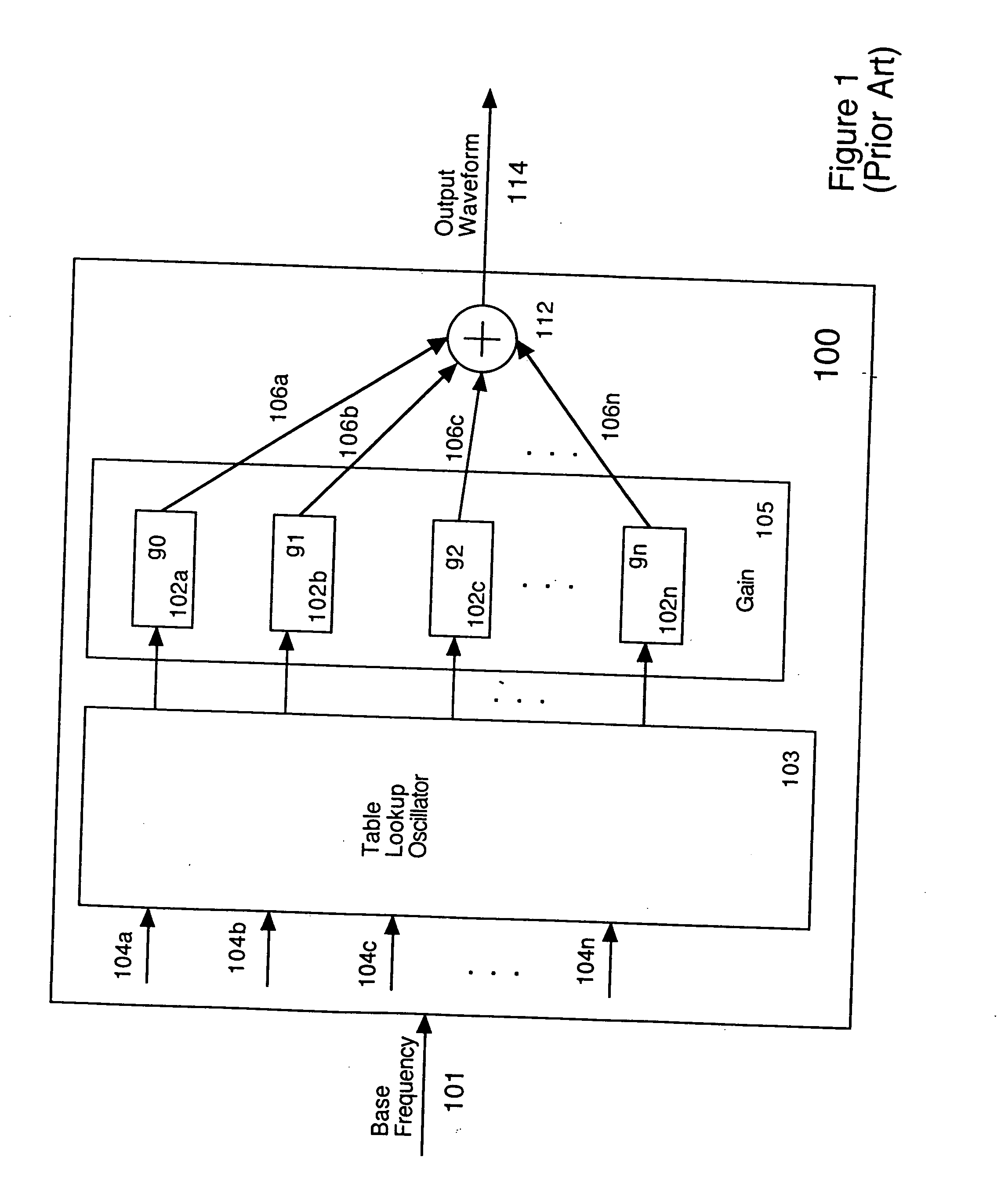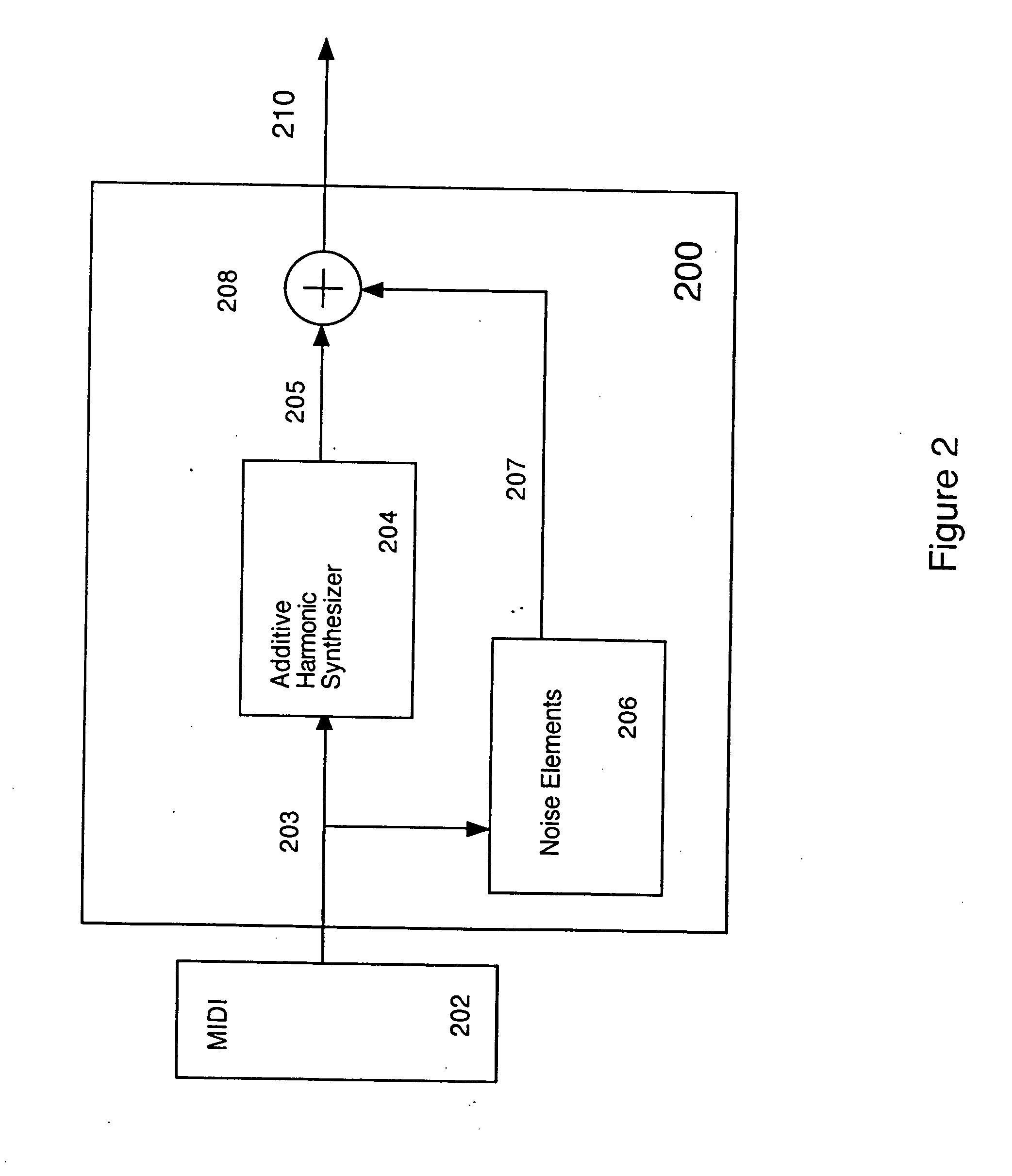Critical band additive synthesis of tonal audio signals
- Summary
- Abstract
- Description
- Claims
- Application Information
AI Technical Summary
Benefits of technology
Problems solved by technology
Method used
Image
Examples
first embodiment
[0036]FIG. 3 is a flow diagram showing a critical band tonal synthesizer 204 according to the present invention. This critical band tonal synthesizer generates the tonal sounds of Synthesizer 200 described above. The embodiment of FIG. 3 is best suited for modeling pitched tonal sounds. A single current phase value 322 is initialized with a single initial phase 320 and incremented by a single phase increment 324. The single current phase 322 is used as an offset into a bank of table lookup oscillators 310. This embodiment is especially efficient for vector processing. Modern CPUs often support efficient vector processing including fetching and calculating multiple values in parallel as long as those values are stored efficiently in memory. Preferably, additive synthesizer 204 interleaves the entries in the tables 310, so that many samples in a row (one from each table in turn) may be read out, rather than skipping around in memory.
[0037] Critical band tonal synthesizer 300 takes adv...
second embodiment
[0067]FIG. 5 is a block diagram illustrating the table lookup / function generator portion of the additive synthesizer of the present invention. This embodiment is very similar to that of FIG. 3, in that a single offset 501 (based upon current phase 322, derived from initial phase 320 and phase increment 324) is the same across all of the table lookup oscillators 510. Critical band signals 512 will have gains applied in gain block 305. Since a single offset 501 is used for all tables 510, it follows that the tables are the same length. An embodiment that is particularly efficient in terms of processing power interleaves the entries in the critical tables 510. This would mean that 24 samples in a row are read out, one from table 510a, one from table 510b, and so on through table 510y, rather than skipping around in memory.
third embodiment
[0068]FIG. 6 is a block diagram illustrating the table lookup / function generator portion of the additive synthesizer of the present invention. In the embodiment of FIG. 6, the first few harmonics are generated by functions generators 610a and 610b. The remaining harmonics are generated as shown in FIG. 5. Function generators 620a and 620b may be second order resonating filters, cordic signal generators, or any similar sinusoidal signal generator.
PUM
 Login to View More
Login to View More Abstract
Description
Claims
Application Information
 Login to View More
Login to View More - R&D
- Intellectual Property
- Life Sciences
- Materials
- Tech Scout
- Unparalleled Data Quality
- Higher Quality Content
- 60% Fewer Hallucinations
Browse by: Latest US Patents, China's latest patents, Technical Efficacy Thesaurus, Application Domain, Technology Topic, Popular Technical Reports.
© 2025 PatSnap. All rights reserved.Legal|Privacy policy|Modern Slavery Act Transparency Statement|Sitemap|About US| Contact US: help@patsnap.com



